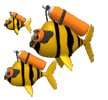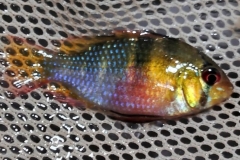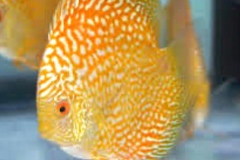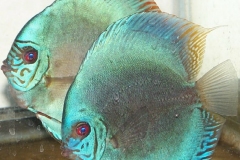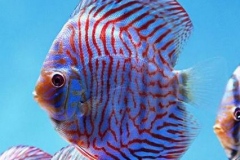This will conclude our series on breeding discus.
Growing out fry requires very little work on your part. The parents do all of the work for you. Discus fry eat the slime off the parent’s side for the first 10 days to two weeks. This slime is very high in protein and contains antibodies that help the babies fight off disease.
Once the fry become free swimming, they will instinctively go to the sides of the parents to feed. They will go back and forth, usually in groups between the male and female parents. They do not show a preference for the father or mother. There is nothing more beautiful in the fish world than a pair of discus, in full spawning coloration, swimming with a school of small babies at their side.
Things you should remember. First, these babies will be very small and weak, so you will need to turn off all filtration, except for a sponge filter. The biggest mistake that you can make is to do a water change in this aquarium with water that is not EXACTLY the same temperature. Discus fry are extremely sensitive to temperature shock and will die if you do a water change with water that is more than a few degrees different in temperature. With that said, discus fry are also very sensitive to ammonia burn, so you will need to do daily partial water changes. We like to keep our grow out discus tanks, until they reach about 1.5 inches, at a temperature of 88 degrees, as the high temperature increases their metabolism and speeds up growth.
After 10 days, start adding a small amount of live baby brine shrimp to the tank. By the end of one month, they will be about ½ inch and will be eating baby brine shrimp exclusively. At this point they are much more hardy and you are pretty much out of the woods. Your Discus fry should reach 1 inch in approximately 2 months and will reach 2 inches in about 4 months. At about 1.5 inches, you can start adding in a flake food and freeze-dried food. We recommend Flake Beef Heart and Freeze Dried Blood Worms, to their food and slowly convert them over to a diet of primarily flake food. This is good for them health wise and will save you a lot of money in the long run. It is also much more convenient.
